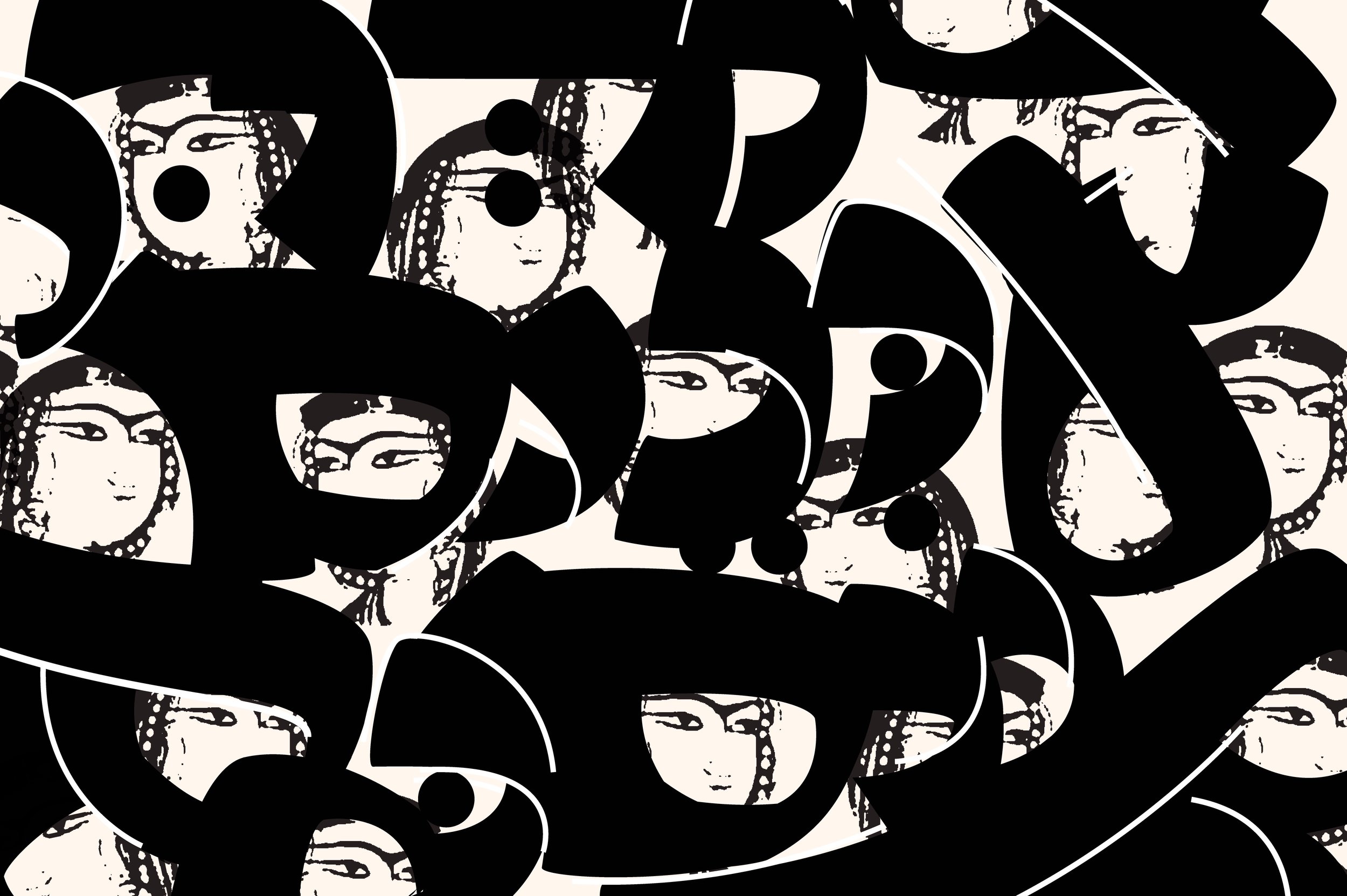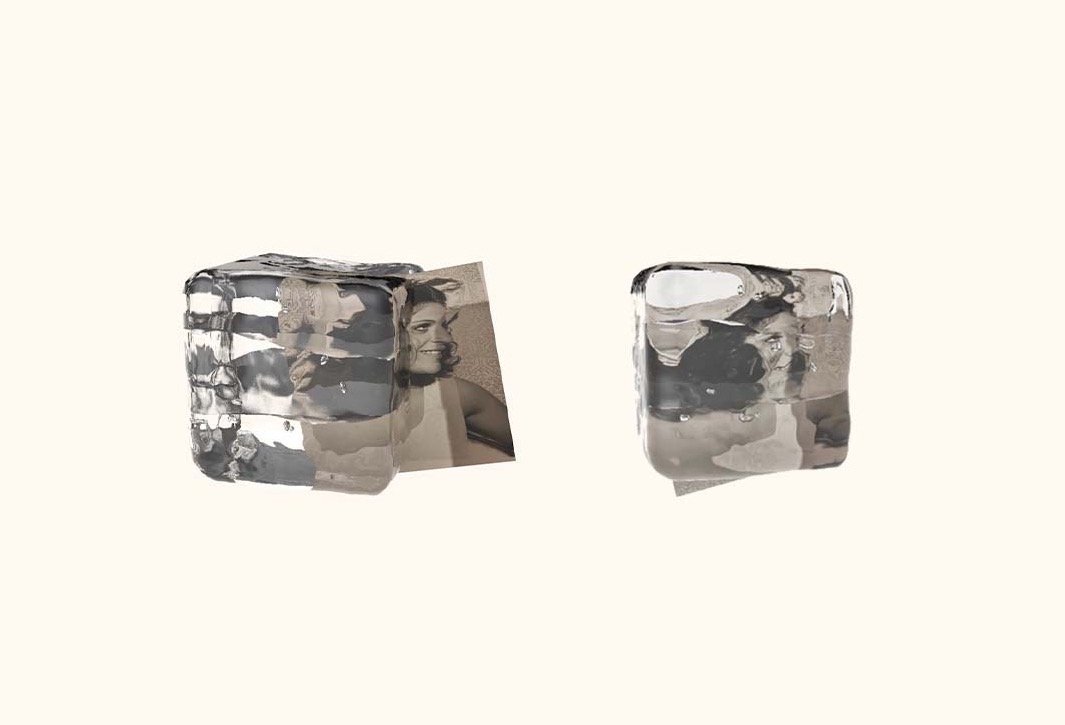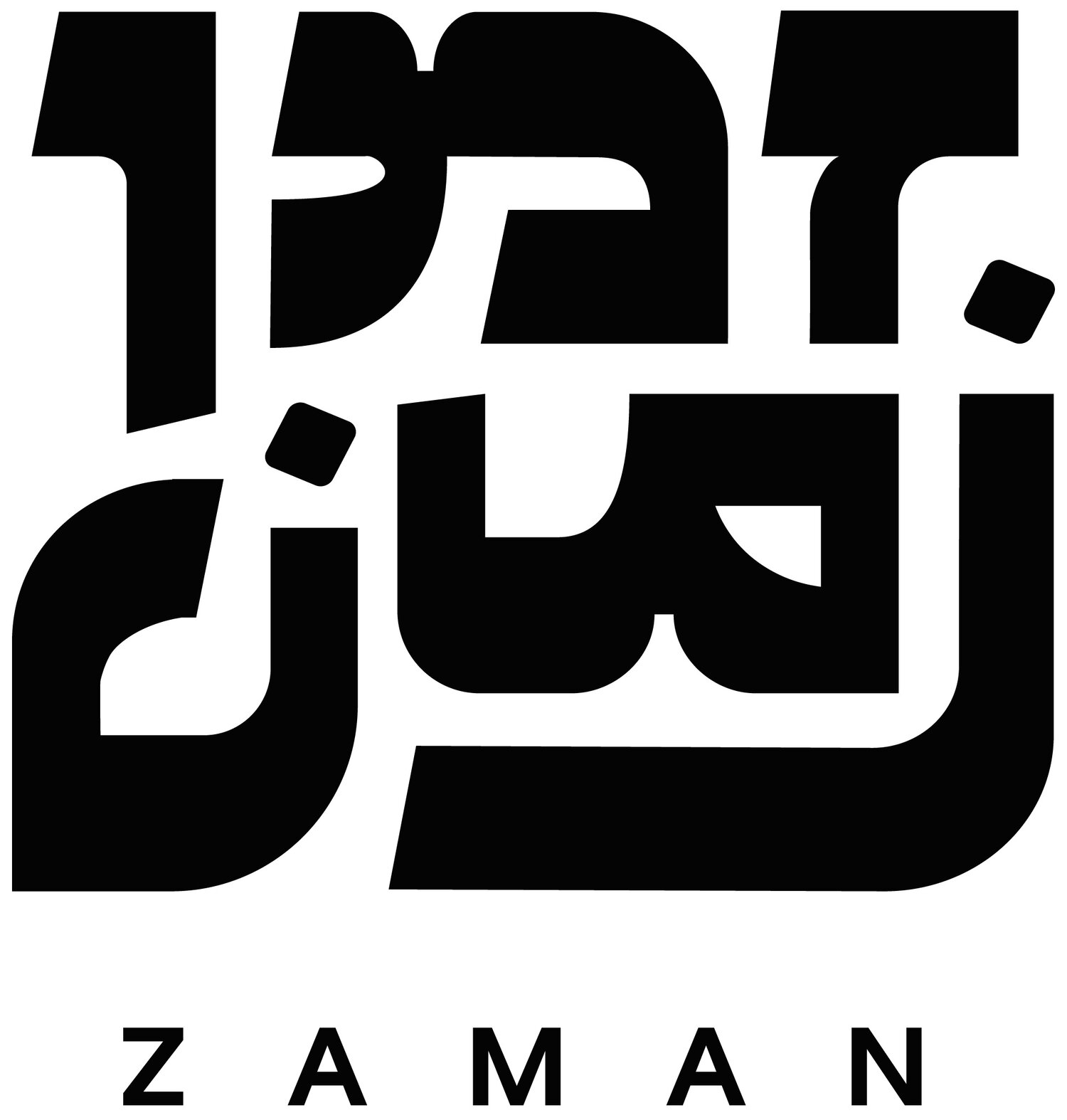
Beyond the Line
In Shany Dvora’s graphic works, dark eyes and placid faces peer out from behind languid, spliced calligraphic forms. They exude a sense of determination to continue to see and be seen, to continue to speak and be spoken.

Ladin٥: a Sephardic Glossary of Queerness
2021 saw rising hostility against queer identities in Turkey, bringing the topic to the fore in discussions about its fraught language politics. By uncovering a largely undocumented Ladino vocabulary, Altaras sheds light on historical gender politics in Sephardic Turkey, and offers a means of building toward a Ladino without lexical limits.

A Tribute to Leah
A dinner commemorating the life of Yadid’s grandmother prompts a series of reflections about the enduring vivacity of her spirit and the power of food as a tool for active remembrance.

(S)wordplay
The history of the seipa, a sword-shaped protective amulet worn by Kurdish Jews, can help us better understand how to care for one another and build trust across communal divisions in the face of illness and collective hardship.

Moris Farhi’s Rose-Tinted Turkishness
The Turkish writer Moris Farhi was an embodiment of a regional pluralism that the Republic would seek to cover under the blanket of nationalism. His faults as a starry-eyed representative of Turkish-Jewish unity expose the potency of the Jewish voice, and its silence, in Turkey.

Mashhadi in Morningside Heights
The daughter of immigrants from Mashhad’s crypto-Jewish community, Amini recounts her endeavor to move into the student dorms at Barnard College amid a retaliatory hunger strike at home and antiwar protests on campus.

Rendered in Ice
Banafsheha digitally manipulates a series of photos sent to her by her grandmother, toying with physical and impalpable notions of preservation in a tenderly awkward fight against time.

Thank You — Winter 2022

Note from the Editors — Winter 2021
Discussing such topics as the intersection between Mizrahiut and post-Soviet anthropology, trans experience, cinema, and Latin American migration, the works included in our Winter 2021 release examine facets of Middle-Eastern Jewish life previously undiscussed at ZAMAN. We are grateful to have the engagement of readers and contributors across the world who push our publication toward a place of greater breadth and dimension with each issue.

The Seret ‘Aravi and the Israeli Imagination
As Israel ramped up rhetoric against the Egyptians in the late 1960s and early 1970s, families of all backgrounds and all walks of life gathered together in their homes to laugh, smile, and cry, watching the films of the “enemy.” By 1973, the two nations again found themselves at war, and yet the movies still captivated the Israeli public. In the morning, Israeli sons were sent to war on Egypt’s border, and in the evening their parents watched Egyptian films.
